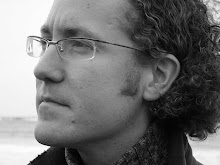BBC TWO in the UK broadcast a wonderful factual programme on sensory illusions (Horizon, 9pm, 18/10/10). The programme covered many well known sensory illusions such as the McGurk effect, multimodal illusions such as the effect of sound and colour on taste perception, magic tricks such as Gustav Kuhn's disappearing ball illusion, and the perceptual completion of impossible figures. If you are interested in sensory illusions the programme provides a nice, succinct introduction. The programme also goes on to talk about the science of illusions and how illusions allow us to understand the cognitive processes and neurology of perception.
The programme also introduced the phenomenon of Synaesthesia in which perception through one modality (e.g. vision) triggers perceptual experiences in another modality (e.g. taste). We all have some synaesthetic experiences such as smells triggering specific visual memories but for people with more developed synaesthesia these cross-modal percepts are richer and more complex. Synaesthesia is a fascinating research area which up until a few years ago was dismissed by the Psychological research community as hokum. Thankfully a new generation of researchers such as Jules Simner (Edinburgh) have used clever behavioural measures combined with neuroimaging to show that synaeasthesia is a real phenomena and one which can seriously advance our understanding of sensory perception.
Viewers in the UK can catch the programme on the BBC iPlayer:
For other recent public presentations of sensory illusions see the work of Susanna Martinez-Conde (Barrow institute), the special issue of Scientific American, and the Illusion of the Year contest at the Vision Sciences Society annual meeting.




No comments:
Post a Comment